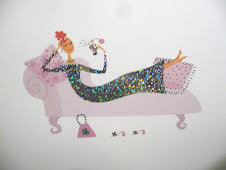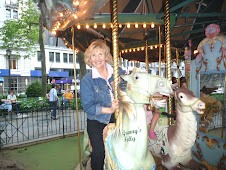

When I read that the Pascack Historical Society of Park Ridge, NJ, was hosting a discussion led by a panel of men and women who served the United States during World War II on the battlefield and on the home front, “The Greatest Generation Speaks”, my decision was sealed. This was an indelible piece of history I had to hear.
Upon entering the room my gaze quickly darted past the gathering crowd and landed on a silver haired woman with twinkling eyes, an Army Corps hat atop her head sitting at the guest speakers table looking strong and well lived. Her name, I later learned, was Lt. Beverly Gutterman Rosenstein of Hillsdale. Her warm expression and engaging smile belied her past that while serving on active duty, she received word that her only brother, 1st Lt. Roger L. Gutterman, had been killed on Anzio Beach. Mrs. Rosenstein, was one of five living legions from “The Greatest Generation,” who came to speak about their lives during the war.
One lady, Irene Anderson, Brooklyn born with a sweet smile and a tell-tale Norwegian accent giving way to her European heritage, told of being a 14 year-old American citizen living in Norway when she was placed in Grini detention camp, just outside Oslo. While there, she told the audience, they all learned German “pretty fast”. Breakfast, she shared, consisted of black coffee and pumpernickel bread. Lunch was vegetable soup (no vegetables to speak of), and dinner was beef vegetable soup with the same routine of searching for the slim offerings of vegetables and beef.
Mrs. Anderson told the audience, who sat in rapt attention, that she and the others lived on the top floor and could hear the screams from the interrogation room. After about six months, she was called into the office… and sent home. She went on to share that later, her grandson asked her how she feels about those days during the war. Her face sobering with remembrance and her tone lowering, she exclaimed… “It was just an awful time to learn how mean people cold be.” She ended her missive with a quote from her grandma who had said during the war, because they were up and down many times during the right seeking refuge, “Can’t they bomb during the day”?
1st Sgt. James Anagnost, a Bronze Star recipient, Army 23rd Infantry, Company K, recalled how he was drafted right out of high school and that after a while he went to the captain and said that he wanted combat duty. He soon found himself in a foxhole during the Battle of the Bulge. Mr. Anagnost, resembling a distinguished John Wayne strong look-alike, told of how the Battle of the Bulge was, in truth, a series of battles that lasted several weeks and months.
Eunice Kesper, a spry and animated ninety-three-year old, with silver-white hair, talked about being at a dance with her young husband in the forties when the music stopped and an announcement was made that the Japanese had bombed Pearl Harbor. And, how she traveled by train from Fort Dix to Texas to visit her Army husband, sometimes not knowing if he’d be there to pick her up or not.
Mrs. Kesper talked as well about the rationing of goods in those days. She has her own personal butter or margarine story. Margarine, she told us, came in a white block with a little jellybean size pill like form that you put into the block and stirred and stirred and stirred until the white block turned yellow. That cinched it for her. She has stuck with butter ever since.
And then there was Toree Tobiassen, United States Navy, who served on LST landing crafts at the Normandy Beach invasion. Mr. Tobiassen spoke of his harrowing experiences and of the brave men lost on Omaha Beach. His deep, velvet voice echoing his stories gave me an eerie feeling as he told of when twenty-six tanks were sent to the beach and how only two landed. The other tanks sank and the men drowned.
Amidst the mayhem, there were also stories that pulled at my heart. Mr. Tobiassen told of a solider on a bulldozer who got blown off three bulldozers before his injuries grounded him and later, the Queen Mother gave him a flag. It was learned at their first reunion in 1990 that the Queen Mother still remembered that young solider.
As we enter the July 4th season of celebrations, I continue reflecting on the true-life stories of these five men and women. The snapshots from their lives during World War II bear no resemblance to Kodak moments, but they are true living snapshots that will go down in infamy. Their stories, told with gut wrenching details combined with their invaluable sense of humor, enabled me to touch a piece of history I’ll never forget and have my eternal salute.
Upon entering the room my gaze quickly darted past the gathering crowd and landed on a silver haired woman with twinkling eyes, an Army Corps hat atop her head sitting at the guest speakers table looking strong and well lived. Her name, I later learned, was Lt. Beverly Gutterman Rosenstein of Hillsdale. Her warm expression and engaging smile belied her past that while serving on active duty, she received word that her only brother, 1st Lt. Roger L. Gutterman, had been killed on Anzio Beach. Mrs. Rosenstein, was one of five living legions from “The Greatest Generation,” who came to speak about their lives during the war.
One lady, Irene Anderson, Brooklyn born with a sweet smile and a tell-tale Norwegian accent giving way to her European heritage, told of being a 14 year-old American citizen living in Norway when she was placed in Grini detention camp, just outside Oslo. While there, she told the audience, they all learned German “pretty fast”. Breakfast, she shared, consisted of black coffee and pumpernickel bread. Lunch was vegetable soup (no vegetables to speak of), and dinner was beef vegetable soup with the same routine of searching for the slim offerings of vegetables and beef.
Mrs. Anderson told the audience, who sat in rapt attention, that she and the others lived on the top floor and could hear the screams from the interrogation room. After about six months, she was called into the office… and sent home. She went on to share that later, her grandson asked her how she feels about those days during the war. Her face sobering with remembrance and her tone lowering, she exclaimed… “It was just an awful time to learn how mean people cold be.” She ended her missive with a quote from her grandma who had said during the war, because they were up and down many times during the right seeking refuge, “Can’t they bomb during the day”?
1st Sgt. James Anagnost, a Bronze Star recipient, Army 23rd Infantry, Company K, recalled how he was drafted right out of high school and that after a while he went to the captain and said that he wanted combat duty. He soon found himself in a foxhole during the Battle of the Bulge. Mr. Anagnost, resembling a distinguished John Wayne strong look-alike, told of how the Battle of the Bulge was, in truth, a series of battles that lasted several weeks and months.
Eunice Kesper, a spry and animated ninety-three-year old, with silver-white hair, talked about being at a dance with her young husband in the forties when the music stopped and an announcement was made that the Japanese had bombed Pearl Harbor. And, how she traveled by train from Fort Dix to Texas to visit her Army husband, sometimes not knowing if he’d be there to pick her up or not.
Mrs. Kesper talked as well about the rationing of goods in those days. She has her own personal butter or margarine story. Margarine, she told us, came in a white block with a little jellybean size pill like form that you put into the block and stirred and stirred and stirred until the white block turned yellow. That cinched it for her. She has stuck with butter ever since.
And then there was Toree Tobiassen, United States Navy, who served on LST landing crafts at the Normandy Beach invasion. Mr. Tobiassen spoke of his harrowing experiences and of the brave men lost on Omaha Beach. His deep, velvet voice echoing his stories gave me an eerie feeling as he told of when twenty-six tanks were sent to the beach and how only two landed. The other tanks sank and the men drowned.
Amidst the mayhem, there were also stories that pulled at my heart. Mr. Tobiassen told of a solider on a bulldozer who got blown off three bulldozers before his injuries grounded him and later, the Queen Mother gave him a flag. It was learned at their first reunion in 1990 that the Queen Mother still remembered that young solider.
As we enter the July 4th season of celebrations, I continue reflecting on the true-life stories of these five men and women. The snapshots from their lives during World War II bear no resemblance to Kodak moments, but they are true living snapshots that will go down in infamy. Their stories, told with gut wrenching details combined with their invaluable sense of humor, enabled me to touch a piece of history I’ll never forget and have my eternal salute.







